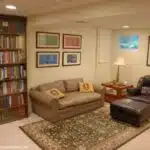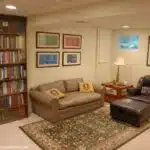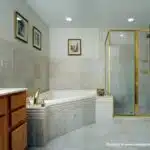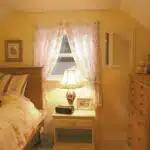As an interior decorator, one has the unique ability to transform spaces into beautiful and functional environments that serve the needs of others. This profession requires a combination of creativity, technical skills, and a strong understanding of design principles. If you have a passion for creating aesthetically pleasing spaces and helping others achieve their dream homes, then becoming an interior decorator may be the perfect career path for you.
To become an interior decorator, one must first obtain the necessary education and training. This can include earning a degree in interior design or completing a certification program from a reputable institution. Additionally, gaining practical experience through internships or apprenticeships is important for developing the skills needed to succeed in this field. With dedication and hard work, anyone with a passion for design can become an interior decorator and help others create beautiful living spaces that enhance their quality of life.
Understanding The Role Of An Interior Decorator
As an interior decorator, you are the architect of aesthetic experiences that enhance the quality of life for your clients. You have a keen eye for detail and an innate sense of style that allows you to create beautiful and functional spaces. Your role is to help your clients articulate their vision for their space and then bring that vision to life.
To clarify your role as an interior decorator, it’s important to understand what you will be responsible for. You will work closely with your clients to develop design concepts that meet their needs and tastes. This includes selecting color schemes, furniture pieces, lighting fixtures, and other decorative elements. You will also need to consider factors such as spatial layout and traffic flow when designing a space.
In addition to creating visually stunning spaces, part of your job responsibilities will include managing budgets, coordinating with contractors and vendors, and ensuring that projects are completed on time. As an interior decorator, you must have excellent communication skills in order to effectively collaborate with clients and other professionals in the industry. With a strong understanding of your role and job responsibilities as an interior decorator, you can begin developing the creative skills necessary to excel in this field.
Developing Your Creative Skills
Color palettes are an integral part of any interior decorating project, and should be carefully considered when starting a project. Exploring color palettes can be done through various means such as online color generators or by referring to colour wheel charts. Creating mood boards is another important step in the decorating process, as it helps the designer visualize the design concept before executing it. Mood boards can be made up of various items such as fabric swatches, magazine clippings, and photographs that reflect the desired design.
Exploring Color Palettes
As an interior decorator, exploring color palettes is a crucial part of developing your creative skills and creating a cohesive design scheme. Exploring color psychology can help you understand the emotions and moods that different colors evoke, allowing you to create spaces that are both visually appealing and functional. By incorporating textures and patterns into your designs, you can add depth and interest to your color schemes.
When exploring color palettes, it’s important to consider the purpose of the space and the mood you want to create. For example, cool colors like blue and green can create a calming atmosphere in bedrooms or bathrooms, while warm colors like red and orange can add energy to living areas or kitchens. Neutral colors like beige or gray can provide a versatile backdrop for any design scheme.
Incorporating textures and patterns into your designs can also add visual interest and depth to your color schemes. Mixing different textures like velvet, linen, or leather can create contrast and dimension in a space. Patterns like stripes or florals can add personality and whimsy to any room. By carefully selecting colors, textures, and patterns that work together harmoniously, you can create beautiful spaces that reflect the unique personalities of your clients.
Creating Mood Boards
As an interior decorator, developing your creative skills is essential in creating a cohesive design scheme. One of the most effective tools for achieving this is by creating mood boards. Mood boards are visual representations that help you plan and organize your design ideas, providing a clear direction for your project. By creating a mood board, you can ensure that your color palette, textures, and patterns work together harmoniously to create the desired atmosphere in the space.
Creating mood boards offers numerous benefits to both designers and clients. Firstly, it allows clients to visualize how different elements will look together before making any final decisions. This helps to avoid costly mistakes and ensures that both parties are on the same page throughout the design process. Secondly, mood boards serve as a source of inspiration for designers, helping them to explore new ideas and push their creative boundaries.
When designing a mood board, there are several tips you should keep in mind to ensure its effectiveness. Firstly, select images that accurately represent your vision for the space while also considering practicality and functionality. Secondly, choose a limited color palette – three or four colors at most – to prevent overwhelming the viewer with too many choices. Finally, incorporate textures and patterns into your mood board to add depth and interest to your design scheme.
In conclusion, creating mood boards is an essential part of developing your creative skills as an interior decorator/designer. By using them as a visual representation of your design ideas, you can ensure that all elements work together harmoniously to create the desired atmosphere in the space. With these tips in mind, you can effectively utilize mood boards in your design process and provide exceptional service to your clients.
Learning The Fundamentals Of Design
Learning the Fundamentals of Design is a crucial step in becoming an interior decorator. As an expert in design principles and elements, an interior decorator must have a deep understanding of color theory, spatial awareness, and other design concepts that guide their work.
Color theory is one of the fundamental concepts in interior decorating. It’s important to understand how colors work together and how they can be used to create different moods and feelings in a space. As an interior decorator, you should know about the different color schemes such as monochromatic, analogous, complementary, and triadic color schemes.
Spatial awareness is another critical element that every interior decorator must master. It involves understanding how rooms are arranged and how furniture placement affects the flow of movement within a space. To achieve this knowledge, decorators must learn about balance, proportion, scale, and emphasis.
By mastering these fundamentals of design such as color theory and spatial awareness, you’ll be able to create beautiful spaces that meet your client’s needs. You’ll be able to transform dull rooms into lively interiors that inspire joy and relaxation. In the next section, we will explore different design styles and trends for inspiration on your journey towards becoming an exceptional interior decorator.
Exploring Different Design Styles And Trends
Design is an art form that requires a keen eye for detail and a creative mind. Learning the fundamentals of design is essential to becoming a successful interior decorator. One way to do this is by studying the principles of color, balance, and proportion. Understanding these concepts will help you create spaces that are aesthetically pleasing and functional.
After mastering the basics, it’s important to explore different design styles and trends. Minimalist design, for example, focuses on simplicity and functionality. It involves using neutral colors, clean lines, and minimal decorations to create a calming atmosphere. On the other hand, eclectic decor combines different styles and periods to create an individualized space that reflects the client’s personality.
As you gain more experience in interior decorating, building a portfolio of your work becomes crucial. A portfolio showcases your skills and demonstrates your ability to create unique designs tailored to each client’s needs. Your portfolio should include photos of completed projects as well as sketches or renderings of potential designs. It’s also helpful to include references from satisfied clients to demonstrate your professionalism and expertise.
Transition: Now that we’ve explored different design styles and how they can be applied in creating unique spaces for clients, let’s take a closer look at how you can start building your own portfolio of work as an interior decorator.
Building A Portfolio Of Your Work
Creating a portfolio is an important part of becoming a successful interior decorator, as it provides potential clients with a glimpse of the designer’s capabilities. Therefore, the process of creating a portfolio should include a selection of the designer’s best work, as well as an accurate description of the projects. Additionally, organizing a portfolio can be done in a variety of ways; this includes categorizing projects by type or style, as well as creating separate sections for residential and commercial projects. Finally, the portfolio should be kept up-to-date with the most recent work, to ensure that potential clients have access to the designer’s most current work.
Creating A Portfolio
As an interior decorator, building a portfolio is crucial to showcase your creativity and design skills. One of the essential elements in creating a portfolio is choosing the right projects to include. Start by selecting your best work that highlights different aspects of your designing process. The projects should be diverse but still reflect your unique style and aesthetic.
After selecting the projects, it’s time to document them appropriately. Take high-quality pictures of your work, showing the before and after images if possible. You can also include sketches or drawings that show how you arrived at the final design. Be sure to label each project with its name, location, and date to provide context for potential clients.
Finally, organize your portfolio in a professional and easy-to-navigate manner. Consider creating sections based on room type or project type to make it more accessible for clients looking for specific services. Remember that your portfolio should showcase not only your technical skills but also your ability to communicate effectively with clients and bring their vision to life through design. With these tips in mind, you’ll have a well-crafted portfolio that will impress potential clients and help you stand out in a competitive industry.
Organizing A Portfolio
Building a portfolio is a crucial aspect of an interior decorator’s career. It serves as a visual representation of their work and showcases their unique style and creativity. When creating a portfolio, it is essential to choose the right projects that highlight different aspects of the design process. The primary objective is to showcase your designing skills while also demonstrating your ability to understand clients’ needs and bring their vision to life.
Organizing your portfolio in a professional and easy-to-navigate manner is equally important. A well-organized portfolio should be divided into sections based on room type or project type. This approach makes it easier for potential clients looking for specific services to find what they need quickly. When organizing your portfolio, ensure that each project has its name, location, and date labeled correctly. Additionally, make sure that the portfolio is presented in high-quality images that portray before-and-after transformations.
Creating a portfolio: Dos and Don’ts are crucial factors when building an impressive interior decorating portfolio. Your portfolio should showcase not only your technical skills but also your ability to communicate effectively with clients. It should demonstrate how you can bring their vision to life through design while maintaining professionalism and attention to detail throughout the entire process. With these tips in mind, you are sure to create a well-crafted portfolio that will impress potential clients and help you stand out in the competitive industry of interior decoration and design.
Networking And Building Connections In The Industry
As an aspiring interior decorator, networking is an essential aspect of building a successful career. Attending networking events is a great way to meet other professionals in the industry and learn more about various areas of specialization. In addition, participating in industry associations provides opportunities for collaboration, skill development, and staying up-to-date with current trends and practices.
Networking events are typically hosted by professional organizations or companies within the interior decorating field. These events offer opportunities for attendees to connect with potential clients, collaborate with other professionals, and showcase their skills. It is important to approach these events with confidence and professionalism while also being open to learning from others.
Industry associations provide a variety of benefits for interior decorators looking to build connections within the industry. These associations typically offer resources such as workshops, conferences, and mentorship programs that can help decorators refine their skills and stay informed about changes in the industry. Additionally, being part of an association can help establish credibility within the field and lead to new business opportunities.
Transitioning into Choosing the Right Education and Training Path
While networking and building connections are crucial components of becoming a successful interior decorator, choosing the right education and training path is equally important. By taking the time to research different educational programs, decorators can ensure they are equipped with the knowledge and skills necessary to succeed in this competitive field.
Choosing The Right Education And Training Path
Embarking on a journey towards becoming an interior decorator is a thrilling experience. It is like opening up a new door towards a world of creativity and design. However, before taking that first step, it is essential to choose the right education and training path. There are two options available for aspiring decorators: online learning or in-person training.
Online learning has become increasingly popular due to its convenience and flexibility. With this option, you can learn at your own pace, which makes it easy to balance school with other responsibilities such as work or family. On the other hand, in-person training provides hands-on experience that often leads to better job prospects and networking opportunities.
Choosing a mentor can also be beneficial when pursuing this career path. A mentor can offer guidance and support while providing valuable knowledge about the industry. They can also help you navigate through challenges that may arise during your journey towards becoming an interior decorator.
In deciding between online learning or in-person training, it is important to consider which option best suits your lifestyle and learning style. Similarly, when selecting a mentor, it is crucial to find someone who aligns with your values and goals as an interior decorator/designer. By choosing the right education and training path along with a fitting mentor, you will be well-equipped with the skills necessary to succeed in this creative field of work.
Aspiring interior decorators have various pathways they can take towards earning their degree in interior design. In the following section, we will delve into these routes in greater detail and explore what each one entails for those embarking on their career journey towards becoming an accomplished interior designer.
Earning A Degree In Interior Design
Interior design career paths can be competitive and difficult to navigate, but a degree in interior design can provide you with the necessary skills and knowledge to succeed. Many universities offer bachelor’s or master’s degrees in interior design that focus on the technical aspects of the field, such as drafting and computer-aided design (CAD). These programs also emphasize creativity and problem-solving, which are essential skills for any successful interior decorator.
Pursuing a degree in interior design can open up many job opportunities for graduates. Some common career paths include working as an interior designer for residential or commercial spaces, becoming a set designer for theatre or film productions, or even starting your own business as an independent consultant. With the right qualifications and experience, there are endless possibilities within this industry.
Overall, earning a degree in interior design is not only personally fulfilling but can also lead to a successful career. By learning the fundamental principles of design and gaining hands-on experience through internships or apprenticeships, you will be prepared to enter into this exciting field with confidence. The next step towards achieving your goals is completing a certification program.
Completing A Certification Program
While earning a degree in interior design is often seen as the most traditional route to becoming an interior decorator, completing a certification program can also be a valuable option. Certification programs are designed to give individuals the skills and knowledge needed to succeed in the interior design industry, without requiring a full four-year degree.
One of the benefits of completing a certification program is that it can often be completed in a shorter amount of time than a traditional degree program. This allows individuals to enter the workforce more quickly and start their careers sooner. Additionally, many certification programs are offered online or through evening classes, allowing students to continue working while pursuing their education.
When choosing the right program, it’s important to do research and consider factors such as cost, location, and curriculum. It’s also important to ensure that the program is accredited by a reputable organization, such as the Council for Interior Design Accreditation (CIDA). By choosing a quality certification program and successfully completing it, individuals can demonstrate their commitment to professionalism and gain an edge in the competitive field of interior design.
Aspiring interior decorators looking for alternative routes to gaining practical experience beyond earning degrees or certifications should consider internships or apprenticeships. These opportunities provide hands-on experience working with experienced professionals in real-world settings. Gaining this type of practical experience can help aspiring decorators develop new skills and refine existing ones while building valuable connections within the industry.
Gaining Practical Experience Through Internships Or Apprenticeships
Finding opportunities for practical experience is crucial for anyone aspiring to become an interior decorator. One way to gain this experience is through internships or apprenticeships. These programs allow aspiring interior decorators to work alongside experienced professionals, learn from them, and hone their skills in a real-world setting.
To find these opportunities, it’s important to build industry relationships. Attend industry events, join professional associations and online communities, and connect with other professionals in the field. Interior decorating is a highly collaborative field, so connecting with others can lead to job offers, recommendations, and other valuable connections.
During internships or apprenticeships, aspiring interior decorators can expect to assist with various tasks such as selecting materials and finishes, creating design plans, drafting sketches and layouts, and managing budgets. It’s essential to take advantage of these opportunities to learn as much as possible about the field.
In summary, gaining practical experience through internships or apprenticeships is a vital step towards becoming a successful interior decorator. Finding opportunities may require building industry relationships through attending events and joining professional associations. Once you secure an internship or apprenticeship position, make sure to take full advantage of the opportunity by learning from experienced professionals and participating in various tasks that will help you develop your skills further.
- Gain hands-on experience working on real-world projects
- Build invaluable connections within the industry
- Receive mentorship from experienced professionals
- Develop a better understanding of the day-to-day responsibilities of an interior decorator
Transition: Now that you have gained practical experience through internships or apprenticeships and built valuable industry relationships, it’s time to take the next step in building your own brand and business as an interior decorator.
Building Your Own Brand And Business
After all the hard work and dedication put into gaining practical experience through internships or apprenticeships, it’s time to build your own brand and business. As an interior decorator, you have a unique perspective on design that sets you apart from others in the industry. It’s important to use this perspective to your advantage when creating content for your business.
Creating content for your brand is essential in today’s digital world. By showcasing your expertise through blog posts, social media posts, and other forms of content, you can establish yourself as a thought leader in the industry. However, it’s important to have a well-planned social media strategy to ensure that your content reaches the right audience.
Identifying your niche and target market is crucial when building your business. Your niche should be based on both your strengths as an interior decorator and the needs of your target market. By focusing on a specific area of design, such as sustainable design or luxury interiors, you can differentiate yourself from competitors and attract clients who are seeking those specific services. With a clear understanding of your niche and target market, you can effectively market yourself and build a successful interior decorating business.
Identifying Your Niche And Target Market
Identifying your niche market is crucial for success in the interior design industry. This involves figuring out what type of design you specialize in and who your ideal client is. By specializing in a particular style or area of expertise, you can distinguish yourself from other designers and attract clients who are specifically looking for your services.
Conducting a target market analysis is an essential step in identifying your niche market. Researching demographics, trends, and consumer behavior can help you define your ideal client’s characteristics, such as age, income level, lifestyle preferences, and geographical location. This information will help you tailor your marketing efforts to reach the right audience effectively.
By identifying your niche market and conducting a target market analysis, you can better understand your ideal clients’ needs and preferences. This will allow you to create customized design solutions that resonate with them, leading to increased client satisfaction and referrals. In the next section, we will discuss how to establish your pricing structure based on the value of your services to ensure that you are compensated fairly for your expertise.
Establishing Your Pricing Structure
After identifying your niche and target market, it is time to establish your pricing structure. As an interior decorator, you need to consider various pricing strategies that will help you attract clients and generate revenue. Pricing strategies can vary depending on the type of project, client budget, and competition in your area.
One pricing strategy is charging by the hour. This is ideal for smaller projects or consultations, where the scope of work is not clearly defined. Another strategy is charging a flat fee per project, which works well for larger projects with a clear scope of work. You may also consider value-based pricing, where you charge based on the perceived value of your services to the client.
Client negotiations are crucial in establishing your pricing structure. It’s important to communicate your value proposition clearly and justify your fees. Be prepared to negotiate and compromise with clients while ensuring that you maintain profitability. Transparency about fees and payment terms from the beginning can also prevent misunderstandings and conflicts down the line.
Managing your projects and clients requires skillful communication, organization, and attention to detail. In the next section, we will discuss how to manage multiple projects simultaneously while maintaining a high level of client satisfaction. From initial consultations to final installations, managing your projects effectively will help build a strong reputation as an interior decorator in this competitive industry.
Managing Your Projects And Clients
As an interior decorator, managing your projects and clients is crucial to your success. Proper time management is a fundamental aspect of project management. You need to ensure that you allocate enough time for each task to avoid delays in the project timeline. Additionally, set realistic deadlines for yourself and your clients so that everyone knows what to expect. This will help you manage your workload effectively and avoid burnout.
Client communication is also an essential part of managing your projects. Always keep an open line of communication with your clients to understand their needs fully. This will help you create designs that meet their expectations while staying within the project budget. It’s crucial to be transparent about the project budget from the beginning because it helps build trust with your clients. Moreover, always keep them updated on any changes or challenges that may arise during the project.
Dealing with difficult clients can be challenging but necessary at times. If you find yourself in this situation, try to understand their concerns and offer practical solutions that align with the project goals and budget. Additionally, always stay professional and polite when addressing any issues raised by a difficult client. Project budgeting is another critical aspect of managing your projects effectively. Always develop a budget before starting any project and ensure that all expenses are accounted for throughout the process.
As an interior decorator, staying up-to-date with industry developments and innovations is vital to remain competitive in the industry constantly evolving over time. Attend workshops, conferences, or read design magazines regularly to keep up with emerging trends in design or technology advances relevant to interior decorating.
By staying informed about new techniques and products available in the market, you can offer innovative solutions while maintaining high-quality standards for your clients’ spaces. Remember that excellent customer service is key; therefore, investing time into improving your skills will not only benefit you professionally but also satisfy your clients’ subconscious desire for serving others better.
Staying Up-To-Date With Industry Developments And Innovations
With the ever-changing trends and design innovations in the interior design industry, it is essential for interior decorators to stay up-to-date with the latest developments. As an interior decorator, you need to be aware of new product releases, emerging styles, and technologies that can help you improve your craft. Staying current in this field will not only help you deliver better results to your clients but also keep you relevant in the competitive market.
One effective way of staying up-to-date with industry developments is by attending industry events. These events provide a platform for designers and decorators to learn from experienced professionals, network with peers, and discover new products and techniques. By attending these events, you will get inspired by new ideas and approaches that can help you create unique designs that stand out from others.
Continuing education is another way of staying current in the industry. With online courses and workshops available today, it has never been easier to enhance your skills and knowledge as an interior decorator. You can learn about different design software packages, lighting techniques, color theory, sustainability practices, and much more. By investing in continuing education programs, you can broaden your horizons as a designer and offer more value to your clients.
- Attending industry events
- Taking online courses
- Participating in workshops
As an interior decorator/designer, it is crucial to stay up-to-date with industry developments. By attending industry events and investing in continuing education programs like online courses or workshops, you will stay informed about emerging trends and technologies that can improve your craft. This will enable you to offer better services to your clients while keeping yourself relevant in the competitive market.
Conclusion
Interior decorating is a dynamic field that requires a combination of creativity, technical skills, and business acumen. Aspiring interior decorators must develop their creative skills by exploring different design styles, learning the fundamentals of design principles, and building a portfolio of their work. It is also important to identify one’s niche and target market to establish a pricing structure that reflects the value of your services.
According to statistics from the Bureau of Labor Statistics, employment in interior design and decoration is projected to grow 4% from 2018 to 2028. This growth rate is slower than the average for all occupations, but it still represents an increasing demand for interior decorators. As an interior decorator, you have the opportunity to transform people’s living spaces and enhance their quality of life through thoughtful design choices.
To be successful in this field, it is crucial to stay up-to-date with industry developments and innovations, manage your projects and clients effectively, and maintain strong relationships with vendors and suppliers. With hard work and dedication, anyone can become an accomplished interior decorator who leaves a lasting impact on the spaces they create.
Image Credits
- “Supermarket Interior Decor | Produce Area | Hanging Trellis | Greenfresh Market” by I-5 Design & Manufacture (featured)













![Calculating How Much Stone Dust You Need 13 [Blog Post]Stone Dust © Oxfam Australia](https://green-life.blog/wp-content/uploads/2023/05/GdZVzgTqPhjq-150x150.jpg.webp)















